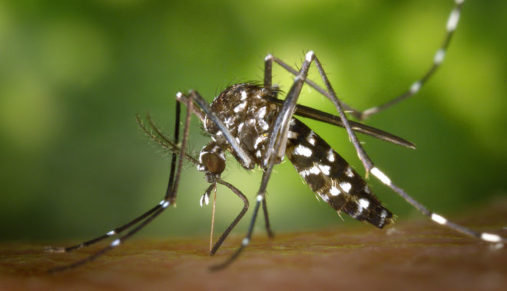Chandigarh is struggling with a public health issue that highlights the sub-standard sanitation levels around the city beautiful. Dengue, a vector borne disease, already has close to 200 victims this year in Chandigarh.
MANIMAJRA HAS THE HIGHEST REPORTED DENGUE CASES
Out of the total dengue count of 198 in the Chandigarh so far, more than 130 are from Manimajra itself. On Friday, 50 dengue cases were confirmed out of which 45 were from Manimajra, while the rest were from Mauli Jagran, Kajheri, Dhanas and Khuda Lahora. What is worrisome is that the the dengue cases count has increased has spread to various sectors in the city.
WHY MANIMAJRA?
Speaking about the concentration of dengue cases in Manimajra (over 130 cases so far), Dr Gaurav Aggarwal, anti-malaria officer, UT, said, “The high number of cases in this locality is because it has a high population density. Besides this, many people use water coolers and fail to regularly change the water, which in turns becomes a breeding ground for mosquitoes. Our teams found that the maximum number of larvae were from these water coolers.”
He also added, “Almost every house has an underground tank (haudi). These are not properly covered.”
WHY RISE IN DENGUE CASES IN CHANDIGARH?
The doctors fear that the cases will rise in the days to come. “With the rise in humidity, the cases will also increase“, said Dr Gaurav Aggarwal, anti-malaria officer, UT. Compared to last year’s number reported dengue cases of 130 till August, this year, the numbers are higher as the vector borne disease emerged from the month of July, which is earlier than the previous year. Sharing the reason for early spike in dengue cases, Dr Aggarwal said, “This time, more cases have been detected due to both awareness and climate change.”
WHAT THE ADMINISTRATION IS DOING TO CONTROL THE DISEASE?
♦ The National Vector Borne Disease Control Department , Chandigarh has deployed 40 people in Manimajra to inspect the area and clean all mosquito breeding sites. It has already issued 650 notices to the residents of Manimajra. However, this seems to have had little impact on ground.
♦ Apart from taking care of the sanitation and cleanliness across the city, the department is supplementing its efforts by spreading awareness on the disease control and prevention.
♦ Gurudwaras and temples have been roped in to educate people on the importance of sanitation. From Sunday onwards, announcements are being made in gurudwaras and temples, wherein residents are requested to clean their water coolers on weekly basis. Besides this, they are also being asked to prevent stagnation of water near their homes and ensure proper coverage of their underground water tanks.
DENGUE: EVERYTHING YOU MUST KNOW
- Dengue fever also known as breakbone fever.
- Dengue is a disease caused by any one of four closely related dengue viruses (DENV 1, DENV 2, DENV 3, or DENV 4).
- The viruses are transmitted to humans by the bite of an infected mosquito– Aedes egypti.
- The virus is not contagious and cannot be spread directly from person to person.
ABOUT THE AEDES EGYPTI- THE CULPRIT
Aedes egypti, the yellow fever mosquito, is a mosquito that can spread dengue fever, chikungunya, Zika fever, Mayaro and yellow fever viruses, and other diseases.
How to recognise the mosquito?
The mosquito can be recognized by white markings on its legs and a marking in the form of a lyre on the upper surface of its thorax. This mosquito originated in Africa, but is now found in tropical and subtropical regions throughout the world.

Where it breeds?
The mosquito breeds in small openings, leaf axils, flower and plants pots, discarded tyres, old oil drums, animal drinking water pots and potentially in stagnant and all water storage containers near human dwellings.
The Mosquito’s biting behaviour
♦ Dengue fever can only be caused by the bite of a female mosquito. The fever is carried and spread by female Aedes aegypti mosquitoes because our blood contains a certain kind of protein, which is vital for the production of their eggs.
♦ Male Aedes aegypti mosquitoes are not injurious to our health as they are dependent on plant nectar for their survival.
♦ This species is commonly inactive in the hours before the sunrise and after the sunset, but it is capable of biting at night in well-lit areas.
♦ This mosquito can bite people without being noticed because it mostly approaches from behind and bites on the ankles and elbows.
♦ It does not spread from person to person, but when the mosquito bites a person infected with the virus, the mosquito spreads it to others but itself can survive the virus.
SYMPTOMS OF DENGUE FEVER
PRECAUTIONARY MEASURES FROM DENGUE
♦ Keep home, environment and surrounding hygiene
♦ Remove all stagnant water and containers
♦ Keep all drains well maintained and repair all chokes
♦ Avoid accumulation of ground water
♦ Fill up all defective grounds
♦ Don’t store water
♦ Avoid unnecessary irrigation
♦ Cover all containers properly
♦ Change flower vase water once a week to prevent dengue mosquito breeding there
♦ Wrap all unused plastic tyres
♦ Regularly change water in animal drinking containers
♦ Use mosquito repellents to avoid mosquito bite
♦ Use mosquito screen to prevent mosquito attack
♦ Use aerosols and mosquito coils to kill mosquitoes
♦ Wear long sleeve and fully covered clothes
♦ Use mosquitoes net around bed while sleeping
Take precautions readers and stay safe.

Source: HT, Times of India, Wikipedia, WebMD, MedicineNet
ALSO READ: This Season’s First Swine Flu Death In Chandigarh | Know How To Stay Safe From Swine Flu






















